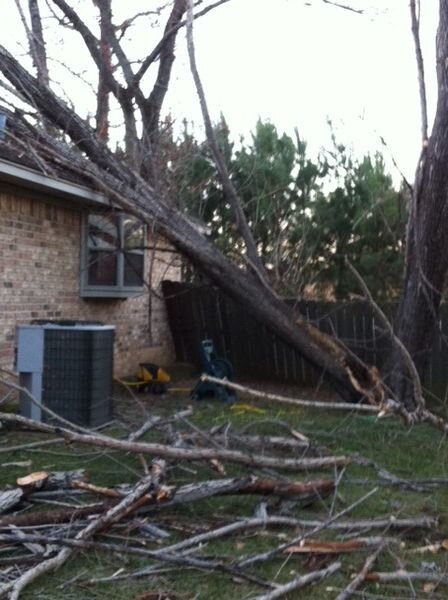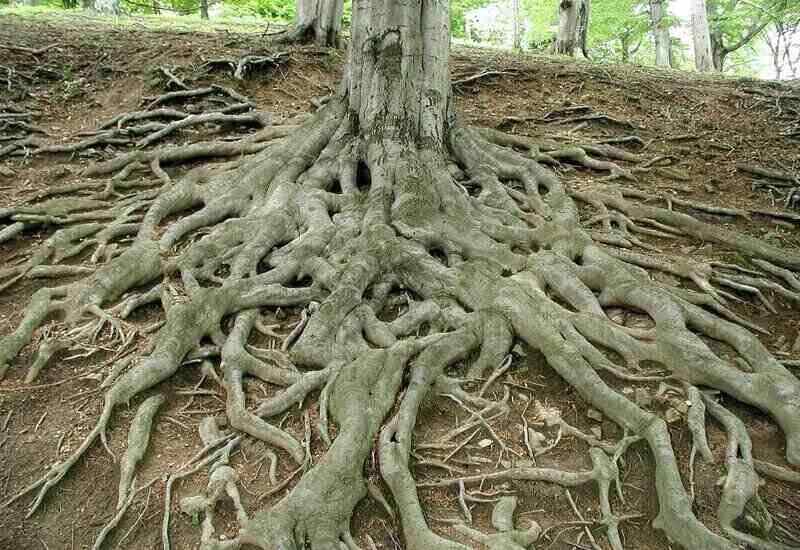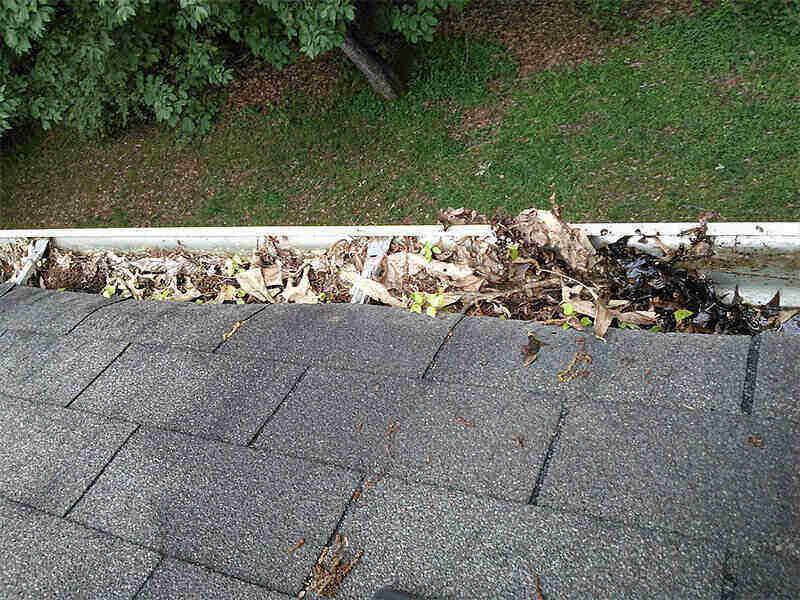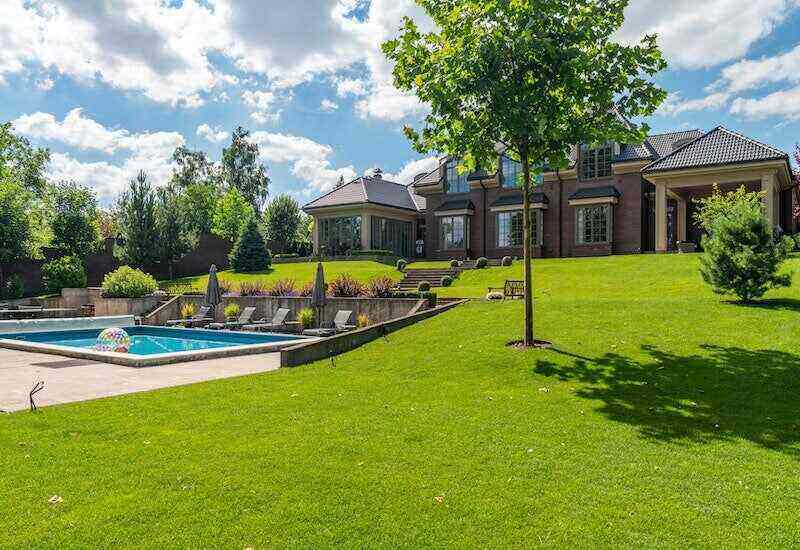
Planting a tree in your yard not only adds more curb appeal and value to your home but also helps the environment. However, that doesn’t mean you can just place it anywhere you want. If you do, you might end up compromising your home’s foundation and well-being. For this reason, you should not plant a tree too close to your house.
Growing a tree takes a lot of time, effort, and patience. You can certainly transplant it if you end up planting it in the wrong place, but it’s best to avoid this situation.
So what problems will you most likely have to deal with? Here we’ll go over some of the most common problems you will have planting a tree too close to your home.
In this article, we’ll cover:
- What if You Have a Tree Too Close to Your Home?
- Where are the Best Places to Plant a Tree in Your Yard?
- FAQ About Why You Shouldn’t Plant Trees Close to Your House
Reasons Not to Plant a Tree Close to Your House

It’s never a good thing to realize a mistake way too late. And when it involves your home, the repercussions can be even more devastating. So, if you’re thinking of planting a tree close to your house, the following reasons will make you rethink your decision:
Branches Hitting the Home
Branches scratching your roof or siding is the least of your worries when the tree is very near your house. During windy or stormy weather, these branches could break through windows and your roof and cause serious damage even if they don’t end up snapping. If anyone is on the deck, they also could get injured when a branch comes down.
With these large branches so dangerously close to your home, it could only mean that your home is at greater risk of structural damage if the entire tree gets toppled over.
Spreading Roots

The manner in which trees spread their roots largely depends on the type of tree. In general, a tree’s root system can grow one to three times the width of its canopy, with some even extending twice its height. The following are a few examples of trees that have aggressive root systems:
- American elm
- Cottonwood
- Willow
- Silver maple
As such, you should take this into account when choosing your tree. Perform research on the size of the tree’s root system when it fully matures. Then, plan its location on your property accordingly.
You also should contact the call-before-you-dig number to map out the underground utility lines (gas, electrical, etc.) in your property. Disregarding this factor could lead to the tree’s roots damaging these utility lines and your house’s foundation. It also may cause concrete settling as well as drain and sewer issues.
Let’s take a closer look at the various damages that spreading roots can do to a property.
House Foundation Issues
Without considering the size of the root system, large trees can become potentially destructive to your property. Without proper tree care and routine tree service, it can push your home’s foundation as they continue to grow. Of course, nobody wants to deal with repairs, especially if it involves the following:
- Cement foundation
- Gas pipes
- Electrical lines
- Water pipes
- Communication cables
They’re not only costly but also overly complex, which could be very disruptive to your routine and budget.
Concrete Settling Problems
Roots can cause significant changes to the soil conditions as they grow and spread. Since your home and yard share the same soil, they naturally affect each other. Thus, it can result in concrete settling, shifting, and cracking – compromising its structural integrity. You might even encounter some of the concrete buckling and breaking apart.
Drain and Sewer Issues
Deep roots growing through sewer or septic lines can increase the possibility of clogging. As they continue to grow and extend underground, they can damage the plumbing system resulting in expensive repairs and tree removal. And if your drainage system gets compromised, water can start to pool near your house, causing health hazards due to mold, rot, and pest infestations.
Soil Moisture
A tree requires water from the soil to keep it alive. Your tree will “drink” water from the ground via its root systems, leading to voids. Studies have shown a strong link between moisture and foundation damage. The fluctuations in soil moisture during the changing seasons are usually considered when building homes. However, planting trees close to your home is not.
This contraction and expansion of the soil can cause any structure near the tree to get damaged. Your fence posts can start to lose their hold in the soil. The worst-case scenario, though, is that they can put too much pressure on your home’s foundation, causing it to crack or shift.
Debris Clogging Gutters and Roof

While autumnal leaf droppings in your yard look very picturesque in fall, it’s a cause for worry if the tree stands close to your house. The leaves can accumulate on your roof and gutters, causing roof or siding damage. This problem is not isolated only to the fall season, though. As strong winds and heavy rains during storms shake your tree’s branches, you’ll also have twigs and bigger branches to deal with.
With the debris building up in your gutters, they’ll get clogged soon enough. It will be unable to divert the water from your roof and can lead to ice jams, flooding, and other water damage problems.
Another thing to note is that large trees growing over your roof and gutters will necessitate more frequent maintenance. Roof cleaning typically costs between $374 and $606, while gutter cleaning costs around $0.60 to $2.25 per linear foot.
What if You Have a Tree Too Close to Your Home?
Sometimes you don’t have control over the placement of the tree, especially when it was already there when you bought the property. Another reason is that the home may have been expanded lately and ended up being too close to a tree.
Regardless of the reason, you don’t have to cut the tree down to resolve the issue. Instead, you can choose to transplant the tree to another location. Growing a tree takes considerable effort and money, so it’s not a good idea to waste your investment.
You might need to hire tree care professionals to do the transplanting for you, especially for mature trees. However, it’s still a better choice than having to chop it down and grow another tree in a different location.
Where are the Best Places to Plant a Tree in Your Yard?

Beyond its most obvious purpose of improving your property’s appearance, proper tree placement also can solve numerous landscape problems. Planting the right trees in the right place can provide you with the following benefits:
- Provides privacy
- Helps absorb noise
- Freshens the atmosphere
- Gives shade and shelter
- Provides shelter, food, and other benefits to wildlife
If your goal is for the tree to provide shade to your house, you would want to plant it somewhere in the southwest corner of the property near the house. It will shade your house in the late afternoons, especially during summer.
But if you’re planting a tree for framing purposes, you’ll have to choose a spot somewhere diagonally outward from the front corner of your house.
Here are some guidelines you can follow regardless of the purpose you want your new tree to achieve:
- Avoid planting trees near septic tanks, driveways, or underground pipelines.
- Make sure the overhanging branches of the tree don’t block the front door of your house. Also, they shouldn’t end up being above the roof.
- The tree should be at least 5 feet from the sidewalk to prevent it from pushing up the concrete.
- Shade from trees can promote grass growth, so place it away from plants where you don’t want these grasses.
The placement of a tree in your yard is both a science and an art. Homeowners must take into account the measurements once it has matured as well as the most optimal way it can serve its primary purpose. To avoid getting overwhelmed, you can hire a tree service company to help you.
FAQ About Why You Shouldn’t Plant Trees Close to Your House
For a tree that can reach a height of 25 to 50 feet when it matures, you should plant it at least 15 to 20 feet away from your house. For those that grow at a maximum height of 25 feet, 10 feet away should be enough.
Some of the trees with the least invasive roots include Japanese maple, Kousa dogwood, crape myrtle, and eastern redbud. These tree species are a great choice, especially if you’re concerned about the adverse effects of spreading roots.
A general rule to remember is that the tree’s distance from any structure should be at least one-half of its maximum tree height. Therefore, your search for the type of tree will largely depend on the mature tree’s height. Some of the best choices for small yards include the following:
• Royal Star magnolia
• Prairifire crabapple
• Camellia japonica
• Black Diamond crape myrtle
Deciding Where to Plant a Tree Starts With Choosing the Right One
Now that you know what could happen if you end up planting your tree in the wrong place, you can be more careful in picking which type to grow. Knowing what your priorities are for planting a tree in the first place can help narrow down your choices. Having these pointers in mind, though, will help prevent it from becoming a safety hazard to your home.
Need help picking the right tree? Connect with a local landscape company today for expert advice.
Main photo credit: Shutterstock